object — OMNI Magazine, Issue 1
This is a publication very much of its time and ahead of its time.
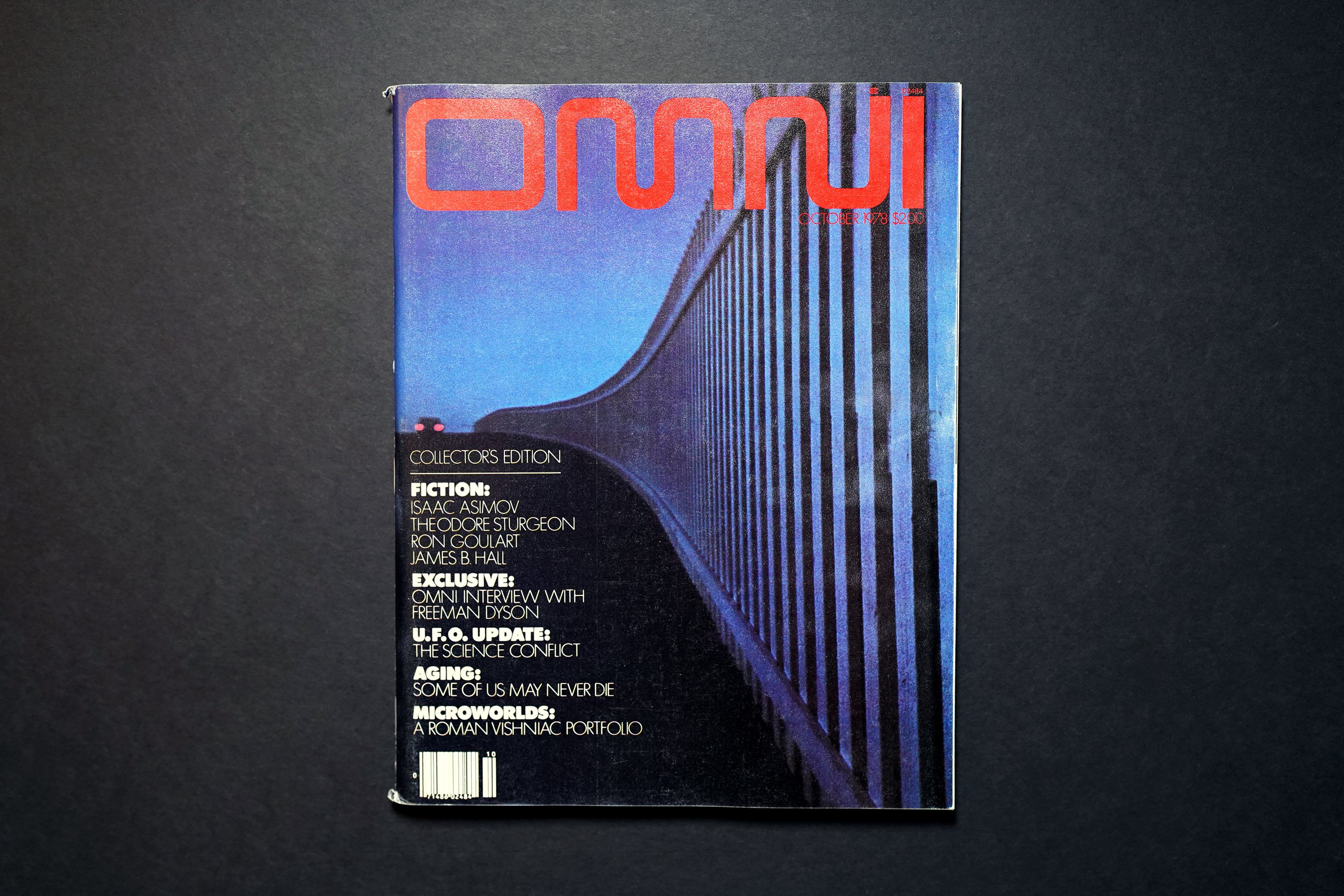
I briefly subscribed to OMNI magazine in the late ’80s and early ’90s. It was the sort of magazine that thoroughly suited my interests but was often a bit over my head and clearly not meant for a kid to read. The publisher, after all, added OMNI into the mix of an empire built entirely upon very adult fare. That probably had something to do with my parent’s reluctance to let me receive it. But say what you will about the publisher’s overall taste, when it came to OMNI, he had excellent taste in ideas, writers, and images.
My interest was renewed over a decade ago when a good friend sent me a bunch of back issues he found in his house. We had been talking about how prescient OMNI was, both in the topics it covered and the way it covered them — structurally, interdisciplinarily, aesthetically — and then a handful of days later, like magic, a big padded envelope arrived to my office with five or six beautiful, intact issues inside. I poured over them for weeks.
Paper
An object like a publication is only as good as its content, but also, it’s a whole lot better when its container is good. Something you may be able to see in these images is that the paper this magazine was printed on up until the late 1980s was extremely high-quality. It was a much heavier weight than the Time Magazine-style, flimsier stock that virtually every magazine eventually turned to when scaling and cost-cutting became necessary. It had a nice texture, and never shed ink on your fingertips.

Toward the end of its run, OMNI shrank in size and weight, and while changes to its outside shouldn’t necessarily affect its inside, in this case I think it did. For OMNI, the medium was at least, in part, the message.
Contents
So, about the publisher’s taste. Yes, Bob Guccione was a pornographer. Yes, he was responsible for the very strange and icky cinematic anomaly known as Caligula. But he and his wife, Kathy Keeton, also imagined a magazine that would discuss scientific and technological progress as readily as the arts, the paranormal, fiction, and all other manner of fringe. There were no other publications like it. It was the center of a VENN diagram mixing the output of many other kinds of publications that would rarely even share space on a newsstand shelf. That alone was a flash of genius. Positioning, after all, is everything.

I loved how, starting with issue #1, OMNI regularly provided a UFO Update. James Oberg wrote the first one of these, which was a smart choice on OMNI’s part given his reputation for scientific debunking of UFO phenomena. This was a column that treated the phenomena seriously, whether written by skeptics or true believers.

Enter Continuum, which was and is probably my favorite five or so pages of the magazine. Continuum was OMNI’s liner notes of the amazing, weird, fascinating, and futuristic, or maybe better put, its capsule reviews of the month’s wild ideas. In 1982, OMNI published a collection of Continuum entries in a book which Isaac Asimov described as “Bite-sized morsels of the future — sometimes startling, sometimes incredible, always fascinating.” A perfect summary. If you traveled back to the late ’70s and your flux capacitor broke, stranding you there permanently, at least you’d get your RSS/Twitter fix from Continuum.
Whether attached to a piece of fiction, a thoroughly-researched and serious piece on life-extension, or a detailed look at macrophotography, OMNI’s imagery was reliably beautiful and interesting. OMNI employed so many artists, photographers, and designers to create truly stunning visuals. That’s, in part, why the print quality was so important — reproducing the line and color at this level must have been expensive, and was an investment on OMNI’s part in maintaining its high-standards.

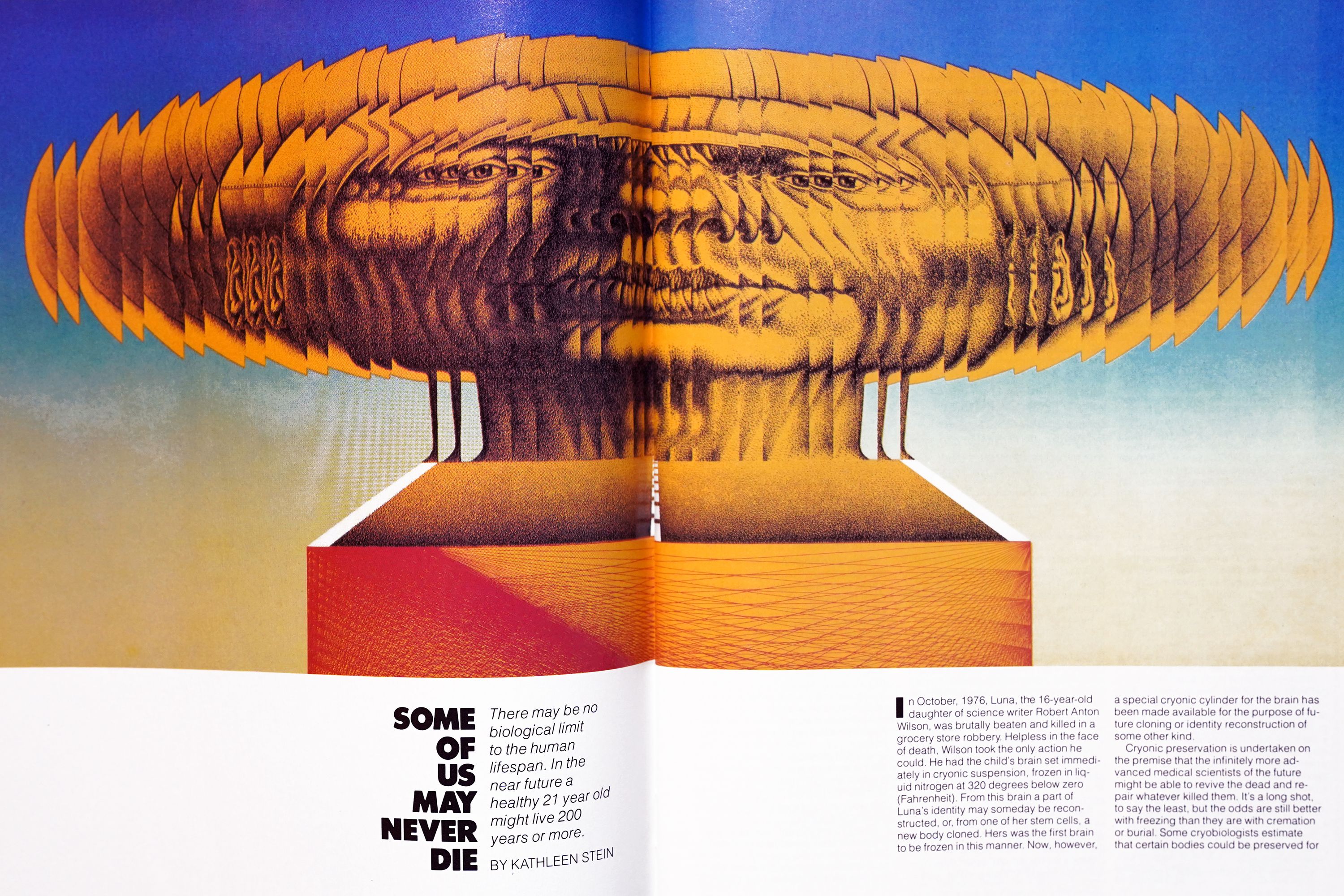
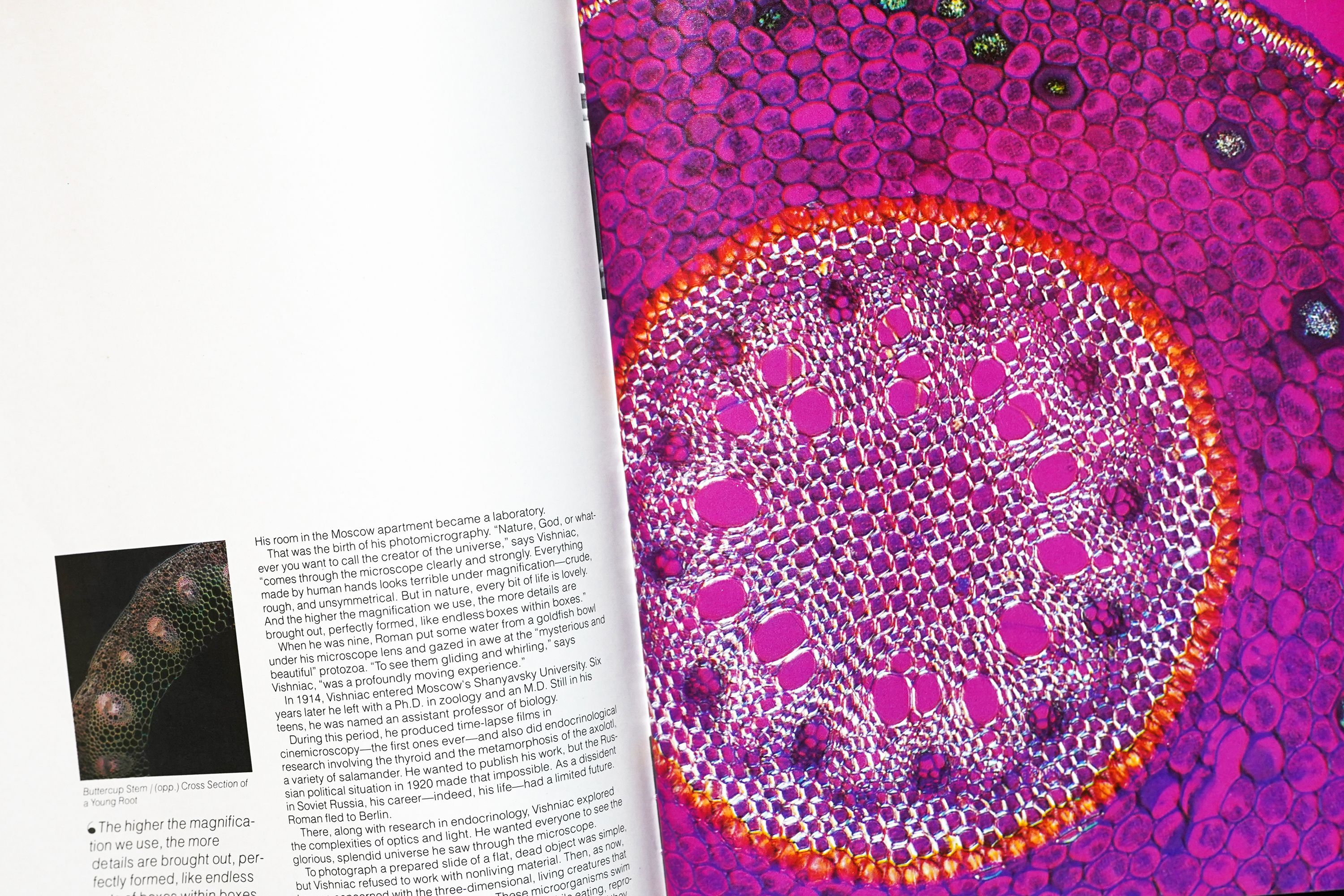
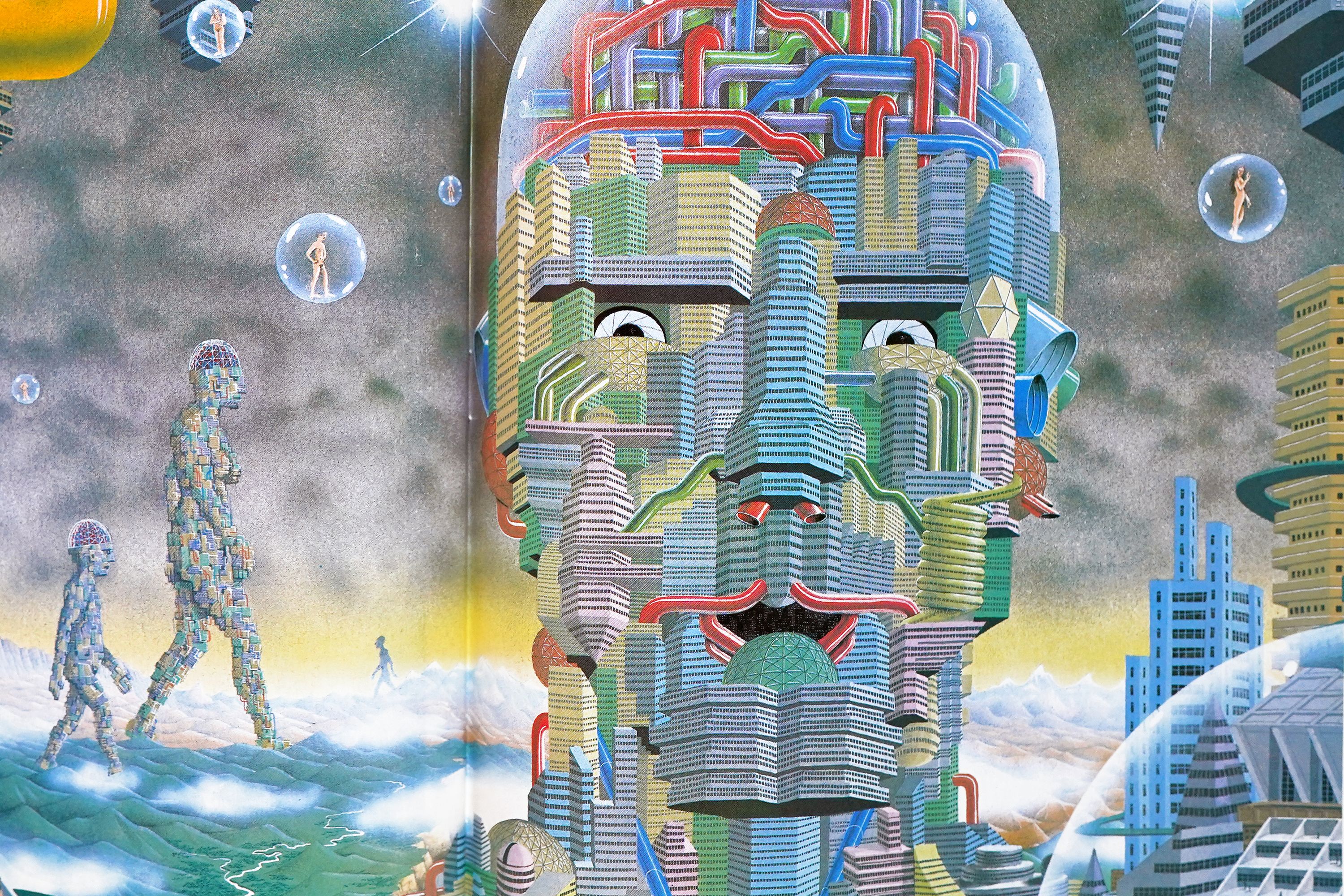
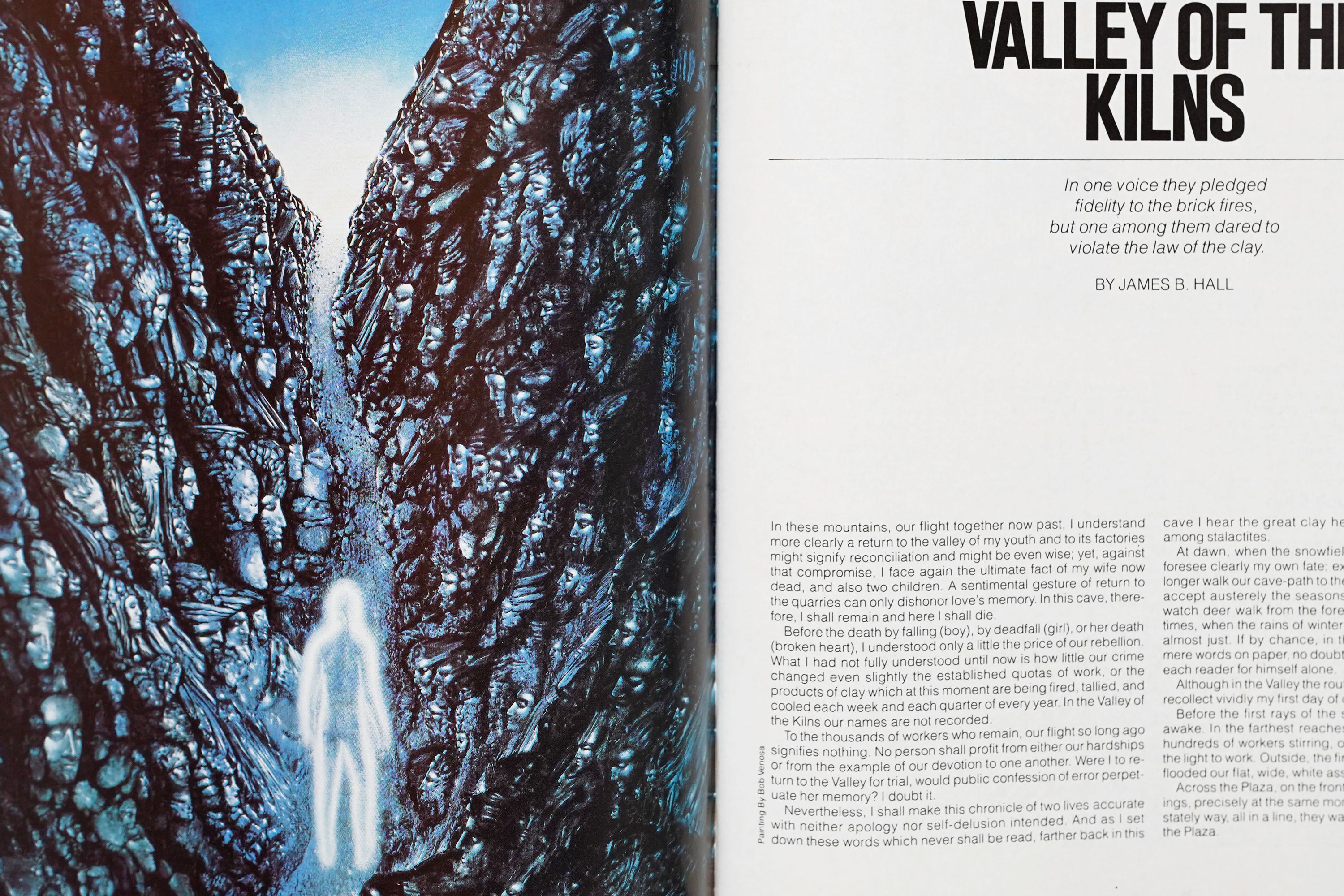
Prescience
As I flipped through this issue, I was reminded that so much of the current zeitgeist was within the scope of view of smart people forty-five years ago. This is an issue with an incredible table of contents that includes:
- pg. 16 — Earth, by Kenneth and David Brower: an article about how terrestrial pollution, like radiation, radiates outward into space and could affect much more than just us.
- pg. 26 — Life, by Dr. Bernard Dixon: an article on viruses, vaccination, and pandemics and how human scientific study of disease present clear and present dangers to the population
- pg. 28 — UFO update!
- pg. 43 – Continuum: included snippets on deep-sea life discoveries, solar energy and legislation around “sun rights” that would prevent terraforming that could block sunlight, collapse of bee populations, cloning, private enterprise space explorations, deep-space gravitational imaging, and more.
- pg. 52 - Some of Us May Never Die, by Kathleen Stein: an article about life extension, scientific pursuit of an end to aging and death, fasting and lifespan, and the socioeconomic impacts of longer lifespans
- pg. 63 — Listening for Life, by Alton Blakeslee: an article about the search for extraterrestrial intelligence
- pg. 72 — The Photomicrographic World of Roman Vishniac, by Francine Sabin: an article about extreme macro photography
- pg. 92 — an article about the Shroud of Turin
- pg. 101 — an interview with Freeman Dyson about planet farming, laser rockets, intelligent clouds, and asteroid colonization
- pg. 123 — Zen: Technology and the Split Brain, by Thomas Hoover: an article on how computers change the way we use our brain.
There’s so much more. In one issue! These are topics that are still current — if not cutting edge — today, but written in 1978. And, fittingly, one of the final pages features this ad (below). It’s as if someone had looked ahead nearly half a century and programmed the contents accordingly.
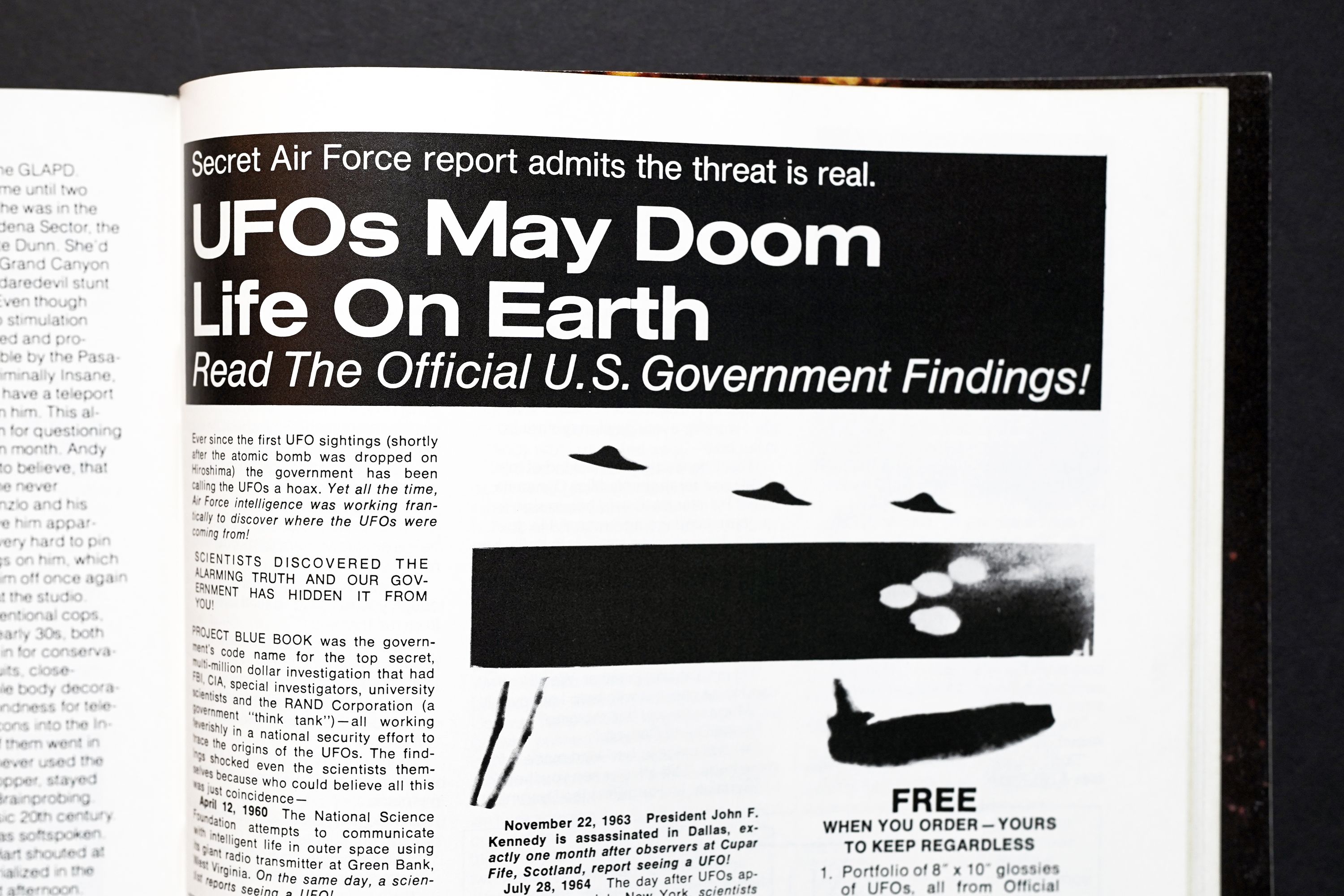
Christopher Butler, April 27, 2023
Filed under: Log